Fish-tail lawyer cane
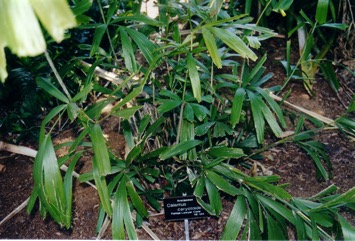
It is a tropical plant. It grows along the edges of drier rainforests. They do best with a warm, well-drained site. Light shade is good and the soil should be rich. They are very frost sensitive when young. In Northeast Australia they grow from sea level to 1,000 m altitude. They can grow in warm temperate frost free places. In the Cairns Botanical Gardens. It suits hardiness zones 9-12. Mt Cootha Botanical Gardens.
Also known as:
Rotan ekor ikan
Edible Portion
- Fruit, Shoots
Where does Fish-tail lawyer cane grow?
Found in: Asia, Australia, Indonesia, SE Asia
Notes: There are 375-400 Calamus species. There are 175 species in tropical Asia.
Growing Fish-tail lawyer cane
Cultivation: Plants are grown from seed. Seed usually grow within 6 months. Seedlings and suckers are difficult to transplant.
Edible Uses: The fleshy layer around the seed is eaten.
Production: They are fast growing. In Australia, fruiting occurs from April to December.
Nutrition Info
per 100g edible portion| Edible Part | Energy (kcal) | Protein (g) | Iron (mg) | Vitamin A (ug) | Vitamin c (mg) | Zinc (mg) | % Water |
|---|---|---|---|---|---|---|---|
| Fruit | - | - | - | - | - | - | |
| Shoots | - | - | - | - | - | - |
Fish-tail lawyer cane Photos

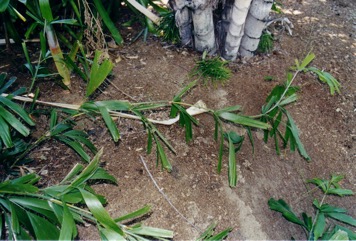
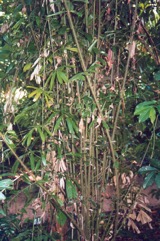
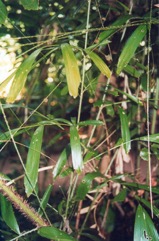
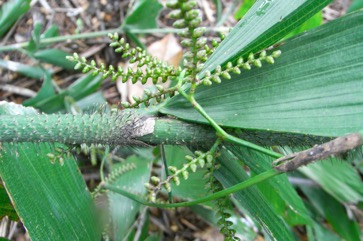
References
Blomberry, A. & Rodd, T., 1982, Palms. An informative practical guide. Angus & Robertson. p 70
Bodkin, F., 1991, Encyclopedia Botanica. Cornstalk publishing, p 188
Cooper W & Cooper W T, 1994, Fruits of the Rain Forest. RD Press p 60
Cooper, W. and Cooper, W., 2004, Fruits of the Australian Tropical Rainforest. Nokomis Editions, Victoria, Australia. p 69
Cronin, L., 1989, The Concise Australian Flora. Reed. p 232
Cronin, L., 2000, Australian Palms, Ferns, Cycads and Pandans. Cronin Publications. p 70
Cundall, P., (ed.), 2004, Gardening Australia: flora: the gardener's bible. ABC Books. p 278
Elliot, W.R., & Jones, D.L., 1982, Encyclopedia of Australian Plants suitable for cultivation. Vol 2. Lothian. p 404
Jackes, B.R., 2001, Plants of the Tropics. Rainforest to Heath. An Identification Guide. James Cook University. p 42
Jones, D.L. & Gray, B., 1977, Australian Climbing Plants. Reed. p 81
Jones D, L, 1986, Ornamental Rainforest Plants in Australia, Reed Books, p 326
Jones, D.L., 1994, Palms throughout the World. Smithtonian Institution, Washington. p 156
Jones, D.L., 2000, Palms of Australia 3rd edition. Reed/New Holland. p 80
Nicholson, N & H., 1994, Australian Rainforest Plants 4, Terania Rainforest Publishing. NSW. p 19
Ratcliffe D & P., 1987, Australian Native Plants for Indoors. Little Hills press. p 65
Riffle, R.L. & Craft, P., 2003, An Encyclopedia of Cultivated Palms. Timber Press. p 284
Sukarya, D. G., (Ed.) 2013, 3,500 Plant Species of the Botanic Gardens of Indonesia. LIPI p 761
Townsend, K., 1994, Across the Top. Gardening with Australian Plants in the tropics. Society for Growing Australian Plants, Townsville Branch Inc. p 110
Tucker, R., 1988, The Palms of Subequatorial Queensland. Palm and Cycad Society of Australia, Milton, Queensland. p 34